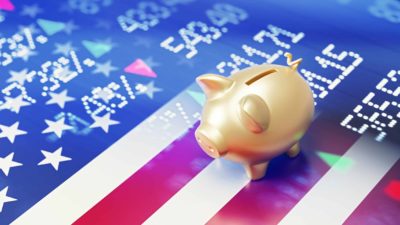This article was originally published on Fool.com. All figures quoted in US dollars unless otherwise stated.
According to Statista, global payment card fraud is a $32 billion problem and is expected to be a $38.5 billion problem by 2027. Riskified Ltd. (NYSE: RSKD) is a small company aiming to solve this big problem. And it may just be cheap enough to have limited downside from here, giving today's investor a relatively low-risk way to invest in this space.
Keep in mind that all investments are fraught with risks, and Riskified is no exception. We'll look at what's holding this company back. But it could be worth taking a speculative position.
Meet Riskified (and its risks)
E-commerce companies obviously don't like fraud and actively try to avoid it. They'll decline transactions that look suspicious. If their hunches are correct, they'll avoid losing money when transactions are disputed and chargebacks result. However, if they're incorrect, they miss out on legitimate revenue. Riskified aims to solve both of these problems for e-commerce companies.
Riskified believes its artificial intelligence (AI) software is better at identifying fraud than e-commerce companies. Companies that use Riskified enjoy higher revenue by having more transactions approved. And if the software makes a mistake, Riskified pays for it, not the e-commerce company -- it's an undeniable value proposition.
Maybe its value proposition is why Riskified has an impressive 99% customer retention rate. Or maybe it's simply because the company's customer base is small and just one customer -- presumably Wayfair -- accounted for a whopping 16% of Riskified's revenue in 2021. It's easier to have a high percentage retention rate when your business is concentrated toward just a few customers.
Riskified's small customer base makes it a risky investment. While its retention rate is impressive now, losing just one account could result in outsized damage.
The other big risk for Riskified is that its AI software doesn't appear to be making meaningful improvements, which is the crux of a bullish investment thesis to begin with. When it approves fraudulent transactions, the company refunds its customers. And this cash outflow reduces its gross profit calculations. Other things affect its gross margin as well. However, investors can get a general idea of the effectiveness of Riskified's AI by watching how its gross margin improves or deteriorates.
Here's a look at Riskified's gross margin over the past six quarters.
| Quarter | Q1 2021 | Q2 2021 | Q3 2021 | Q4 2021 | Q1 2022 | Q2 2022 |
|---|---|---|---|---|---|---|
| Gross margin | 56% | 60% | 46% | 53% | 52% | 51% |
Data source: Riskified's press releases. Chart by author.
Riskified's management blames its gross margin underperformance on diversification. It's picked up new customers in new categories, and its AI software needs to be trained for the particularities in each. Long term, this is a really good thing if true.
However, the point remains that Riskified stock is a risky investment. It's hard to quantify the quality of its software. And if it's not quality, the company likely won't grow and it will lose customers in time, which we've already noted would be a big deal.
A risk-adjusted entry point?
As of this writing, Riskified has a market capitalization of $670 million -- squarely in small-cap territory. However, the company has a stellar balance sheet of $488 million in cash, cash equivalents, and short-term deposits and has no debt. Adjusting for this gives Riskified an enterprise value (the value of the business itself) of under $200 million, which is really small.
For perspective, Riskified expects to generate between $255 million and $258 million in revenue in 2022. Therefore, its enterprise value is actually below its sales, which is pretty cheap.
The other thing to consider is that Riskified isn't profitable, but its cash burn is modest. Through the first half of 2022, the company has just negative $19.3 million in cash from operating activities, giving it a really long runway considering its large cash position.
The market isn't asking investors to pay up for Riskified stock. The company is cheaply valued, is close to profitability, and has a rock-solid balance sheet. Riskified stock is down close to 90% from its all-time high, but these factors mitigate further downside from here.
It could be a buy
The points made early in the article clearly demonstrate that Riskified is a speculative investment, not a sure thing. However, the price could be right to take a small position and add it to a larger portfolio.
If Riskified lives up to its potential, a little stake now will be sufficient for investors. With a market cap of just $670 million, it has ample room to expand in the $32 billion (and growing) payment-fraud space. And the company has additional revenue-growth opportunities not discussed here.
From where it trades today, Riskified can be a multi-bagger investment. But it still has a lot to prove.
This article was originally published on Fool.com. All figures quoted in US dollars unless otherwise stated.









